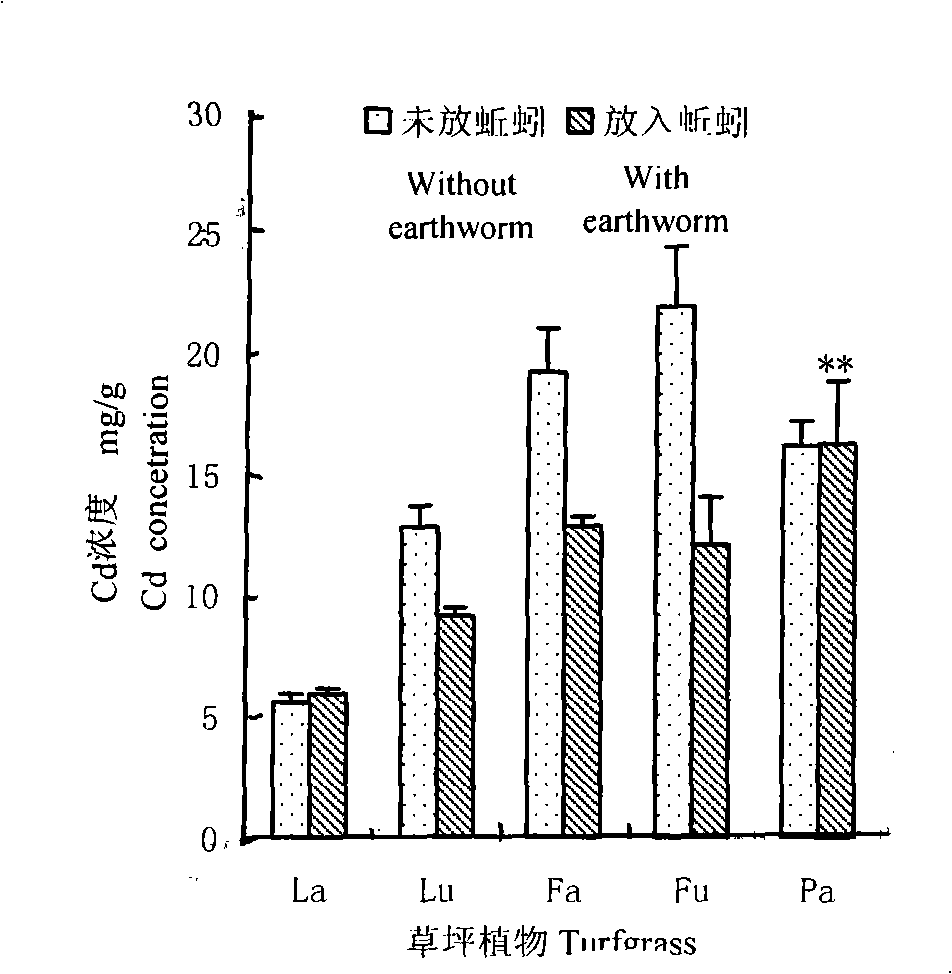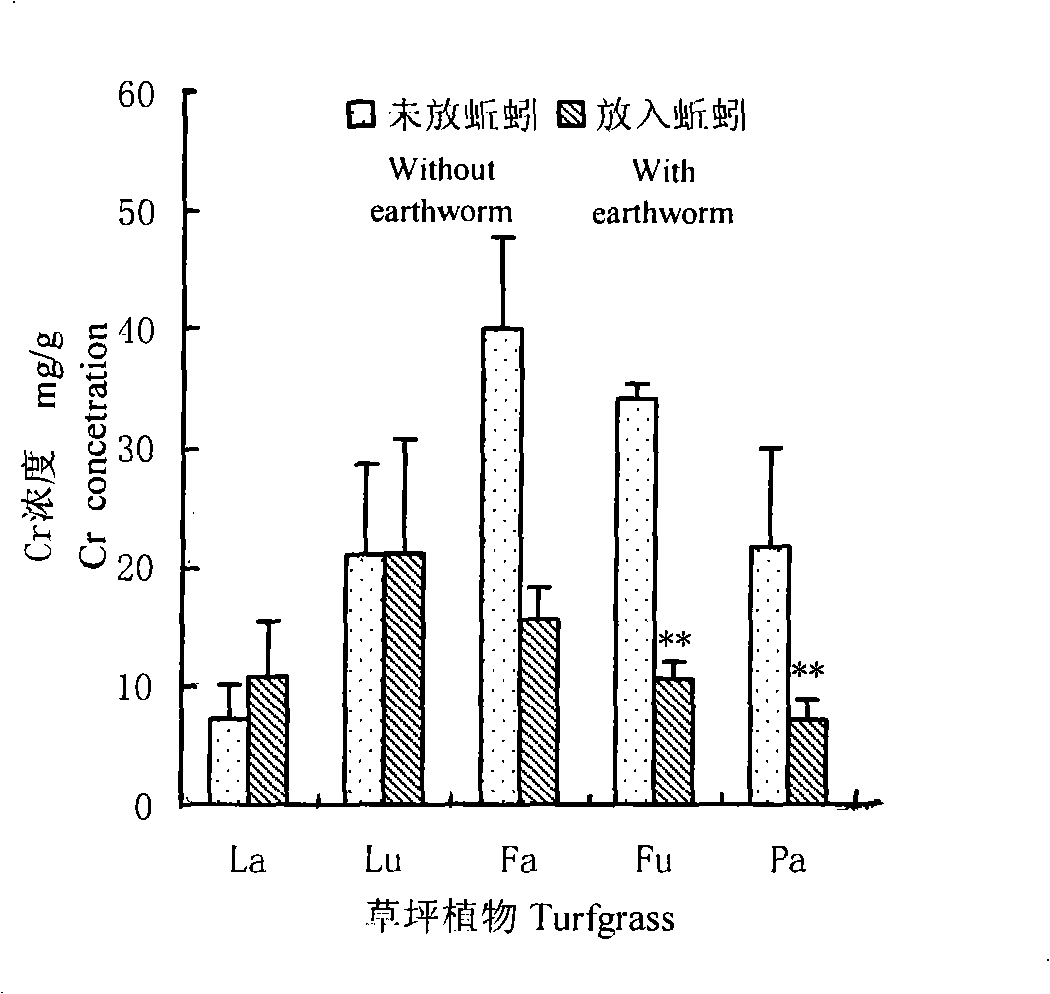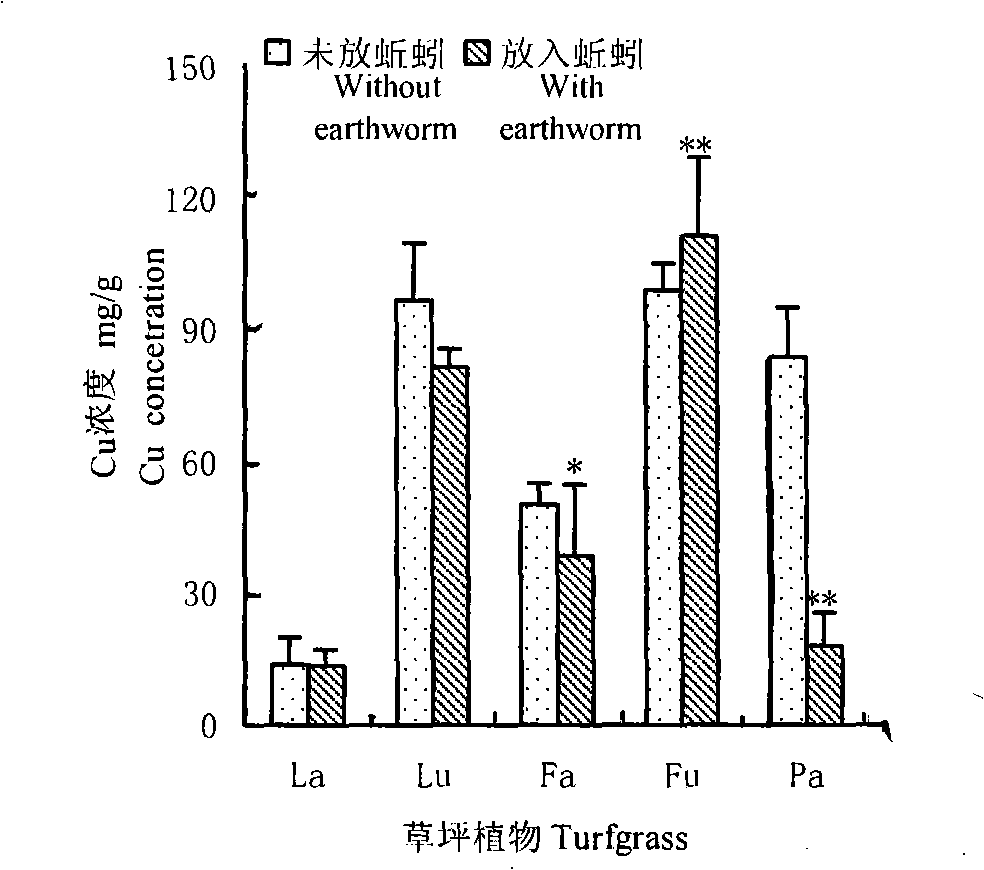Method for promoting lawn absorb heavy metal from consumer garbage compost and increasing photosynthesis amount cooperated with angleworm
A technology for domestic waste and garbage composting, which is used in the restoration of polluted soil and other directions
- Summary
- Abstract
- Description
- Claims
- Application Information
AI Technical Summary
Problems solved by technology
Method used
Image
Examples
Embodiment 1
[0082] Source of raw materials: The domestic waste compost in Xiaodian, Tianjin was used as the test substrate. Turfgrasses are perennial ryegrass (Lolium perenne L.), tall fescue (Festuca arundinacea L.) and bluegrass (Poa pratensis L.), which are common in northern my country. Earthworms were Eisenia fetida provided by Tianjin Ninghe Jia Liming Earthworm Breeding Company.
[0083] experimental method:
[0084] Take a 18×20cm plastic basin with air holes at the bottom, put a layer of gauze on the bottom of the basin to ensure good air permeability, and then spread a layer of moist soil to prevent earthworms from drilling out from the bottom. Put 2kg of domestic waste compost through a 20-mesh sieve into each pot, wash the earthworms, and put them in an enamel plate to spit out the soil for one day, put 40 earthworms in each pot, and sow ryegrass, tall fescue, and bluegrass on the surface of the compost substrate. Grass seed 1.5g, with no earthworms as the control, repeated ...
Embodiment 2
[0095] Raw material source: same as above
[0096] Take a 18×20cm enamel pot with air holes at the bottom, put a layer of gauze on the bottom of the pot to ensure good air permeability, and then spread a layer of moist soil to prevent earthworms from drilling out from the bottom. Put 2kg of domestic waste compost through a 20-mesh sieve into each pot, wash the earthworms, and put them in an enamel plate to spit out the soil for one day, put 60 earthworms in each pot, and sow ryegrass, tall fescue, and bluegrass on the surface of the compost substrate. Grass seed 1.5g, with no earthworms as the control, repeated 3 times. The experiment was carried out at room temperature, grown under natural light, the average light time was 7 hours, the indoor temperature was 18°C, and the relative humidity was -39%. Spray an appropriate amount of water every day to keep the field water holding capacity at 65% until the end of the experiment. Harvest after 45 days, and measure various physio...
PUM
 Login to View More
Login to View More Abstract
Description
Claims
Application Information
 Login to View More
Login to View More - R&D
- Intellectual Property
- Life Sciences
- Materials
- Tech Scout
- Unparalleled Data Quality
- Higher Quality Content
- 60% Fewer Hallucinations
Browse by: Latest US Patents, China's latest patents, Technical Efficacy Thesaurus, Application Domain, Technology Topic, Popular Technical Reports.
© 2025 PatSnap. All rights reserved.Legal|Privacy policy|Modern Slavery Act Transparency Statement|Sitemap|About US| Contact US: help@patsnap.com



